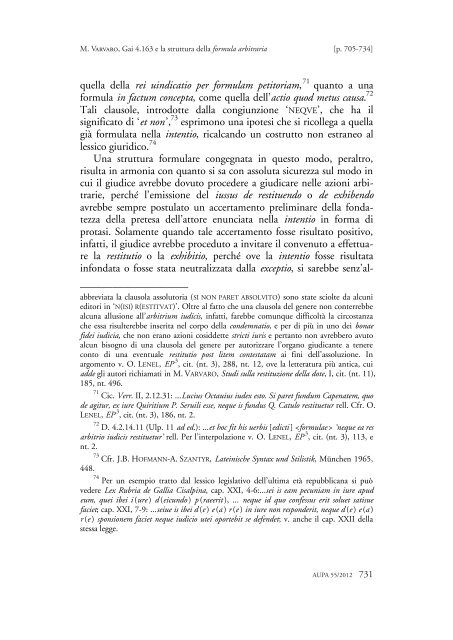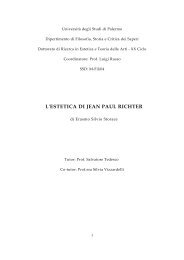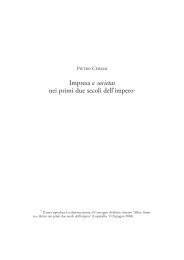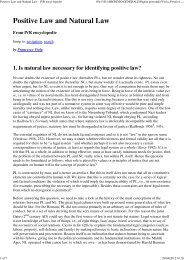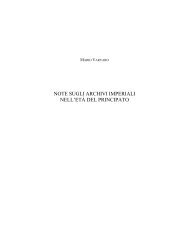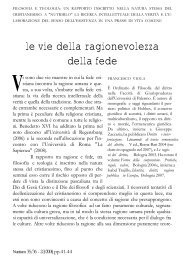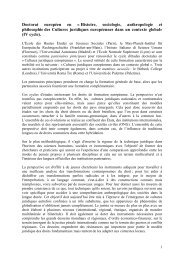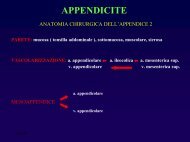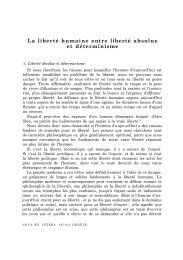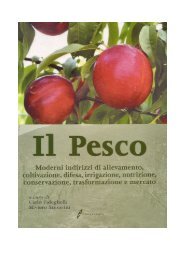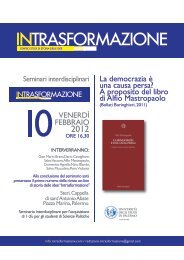M. VARVARO, Gai 4.163 e la struttura della formula arbitraria nell ...
M. VARVARO, Gai 4.163 e la struttura della formula arbitraria nell ...
M. VARVARO, Gai 4.163 e la struttura della formula arbitraria nell ...
Create successful ePaper yourself
Turn your PDF publications into a flip-book with our unique Google optimized e-Paper software.
M. Varvaro, <strong>Gai</strong> <strong>4.163</strong> e <strong>la</strong> <strong>struttura</strong> del<strong>la</strong> formu<strong>la</strong> <strong>arbitraria</strong> [p. 705-734]<br />
quel<strong>la</strong> del<strong>la</strong> rei uindicatio per formu<strong>la</strong>m petitoriam, 71 quanto a una<br />
formu<strong>la</strong> in factum concepta, come quel<strong>la</strong> dell’actio quod metus causa. 72<br />
Tali c<strong>la</strong>usole, introdotte dal<strong>la</strong> congiunzione ‘NEQVE’, che ha il<br />
significato di ‘et non’, 73 esprimono una ipotesi che si ricollega a quel<strong>la</strong><br />
già formu<strong>la</strong>ta nel<strong>la</strong> intentio, ricalcando un costrutto non estraneo al<br />
lessico giuridico. 74<br />
Una <strong>struttura</strong> formu<strong>la</strong>re congegnata in questo modo, peraltro,<br />
risulta in armonia con quanto si sa con assoluta sicurezza sul modo in<br />
cui il giudice avrebbe dovuto procedere a giudicare <strong>nell</strong>e azioni arbitrarie,<br />
perché l’emissione del iussus de restituendo o de exhibendo<br />
avrebbe sempre postu<strong>la</strong>to un accertamento preliminare del<strong>la</strong> fondatezza<br />
del<strong>la</strong> pretesa dell’attore enunciata nel<strong>la</strong> intentio in forma di<br />
protasi. So<strong>la</strong>mente quando tale accertamento fosse risultato positivo,<br />
infatti, il giudice avrebbe proceduto a invitare il convenuto a effettuare<br />
<strong>la</strong> restitutio o <strong>la</strong> exhibitio, perché ove <strong>la</strong> intentio fosse risultata<br />
infondata o fosse stata neutralizzata dal<strong>la</strong> exceptio, si sarebbe senz’al-<br />
——————————<br />
abbreviata <strong>la</strong> c<strong>la</strong>uso<strong>la</strong> assolutoria (SI NON PARET ABSOLVITO) sono state sciolte da alcuni<br />
editori in ‘N(ISI) R(ESTITVAT)’. Oltre al fatto che una c<strong>la</strong>uso<strong>la</strong> del genere non conterrebbe<br />
alcuna allusione all’arbitrium iudicis, infatti, farebbe comunque difficoltà <strong>la</strong> circostanza<br />
che essa risulterebbe inserita nel corpo del<strong>la</strong> condemnatio, e per di più in uno dei bonae<br />
fidei iudicia, che non erano azioni cosiddette stricti iuris e pertanto non avrebbero avuto<br />
alcun bisogno di una c<strong>la</strong>uso<strong>la</strong> del genere per autorizzare l’organo giudicante a tenere<br />
conto di una eventuale restitutio post litem contestatam ai fini dell’assoluzione. In<br />
argomento v. O. LENEL, EP 3 , cit. (nt. 3), 288, nt. 12, ove <strong>la</strong> letteratura più antica, cui<br />
adde gli autori richiamati in M. <strong>VARVARO</strong>, Studi sul<strong>la</strong> restituzione del<strong>la</strong> dote, I, cit. (nt. 11),<br />
185, nt. 496.<br />
71 Cic. Verr. II, 2.12.31: ...Lucius Octauius iudex esto. Si paret fundum Capenatem, quo<br />
de agitur, ex iure Quiritium P. Seruili esse, neque is fundus Q. Catulo restituetur rell. Cfr. O.<br />
LENEL, EP 3 , cit. (nt. 3), 186, nt. 2.<br />
72 D. 4.2.14.11 (Ulp. 11 ad ed.): ...et hoc fit his uerbis [edicti ] ‘neque ea res<br />
arbitrio iudicis restituetur’ rell. Per l’interpo<strong>la</strong>zione v. O. LENEL, EP 3 , cit. (nt. 3), 113, e<br />
nt. 2.<br />
73 Cfr. J.B. HOFMANN-A. SZANTYR, Lateinische Syntax und Stilistik, München 1965,<br />
448.<br />
74 Per un esempio tratto dal lessico legis<strong>la</strong>tivo dell’ultima età repubblicana si può<br />
vedere Lex Rubria de Gallia Cisalpina, cap. XXI, 4-6:...sei is eam pecuniam in iure apud<br />
eum, quei ibei i (ure ) d (eicundo ) p (raeerit ), ... neque id quo confessus erit soluet satisue<br />
faciet; cap. XXI, 7-9: ...seiue is ibei d (e ) e (a ) r (e ) in iure non responderit, neque d (e ) e (a )<br />
r (e ) sponsionem faciet neque iudicio utei oportebit se defendet; v. anche il cap. XXII del<strong>la</strong><br />
stessa legge.<br />
AUPA 55/2012 731


